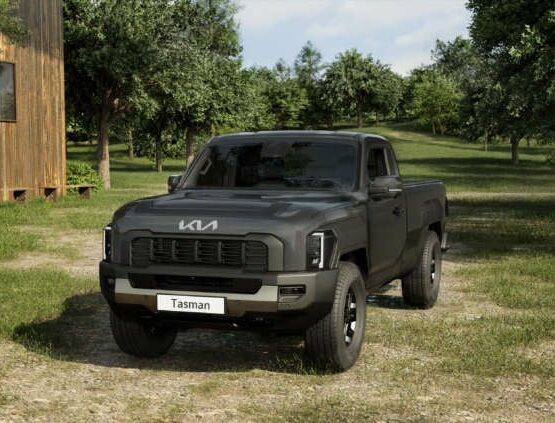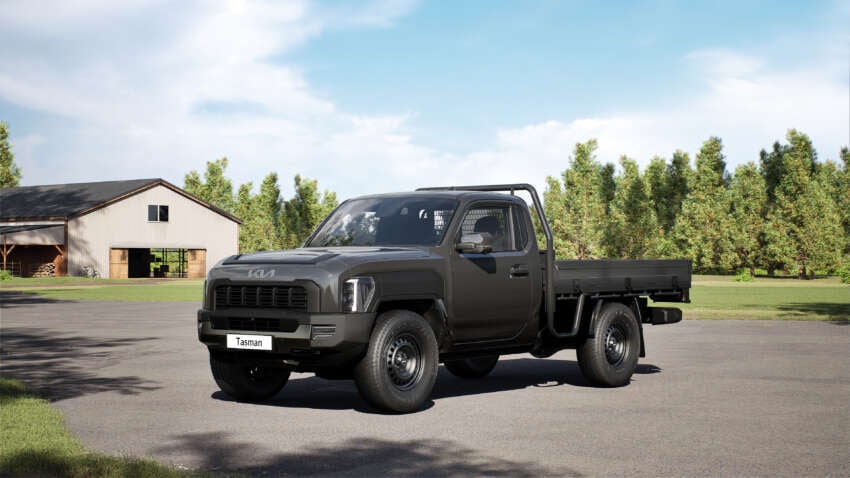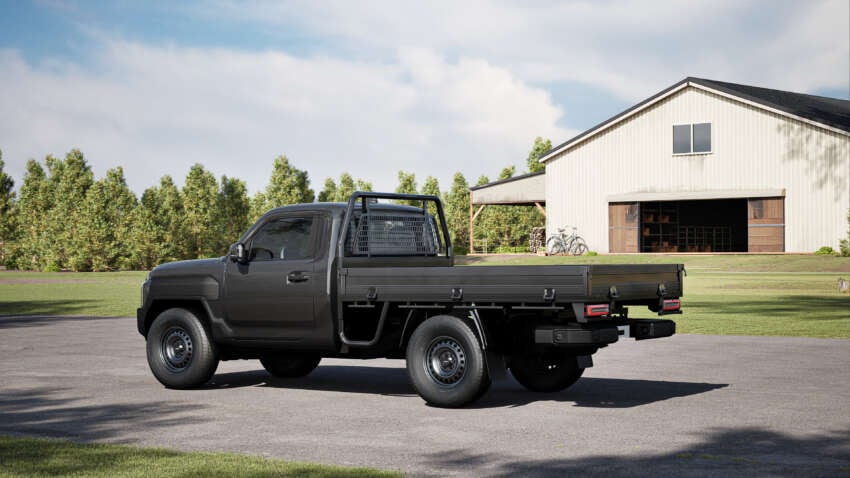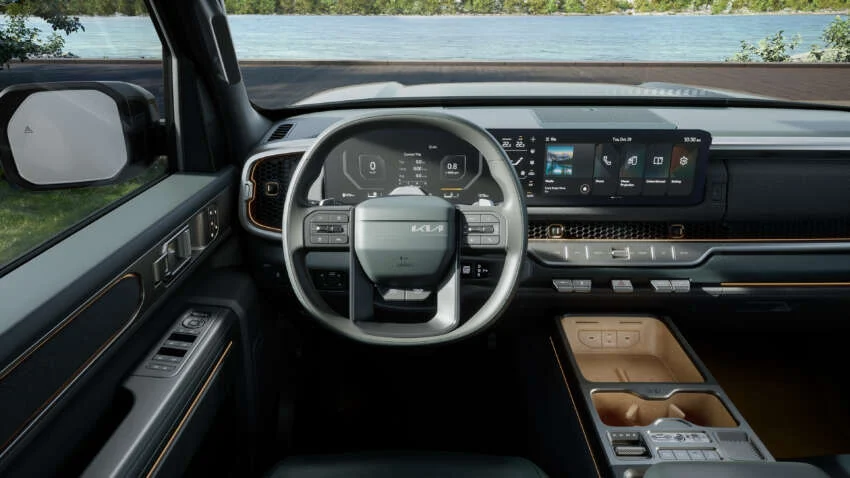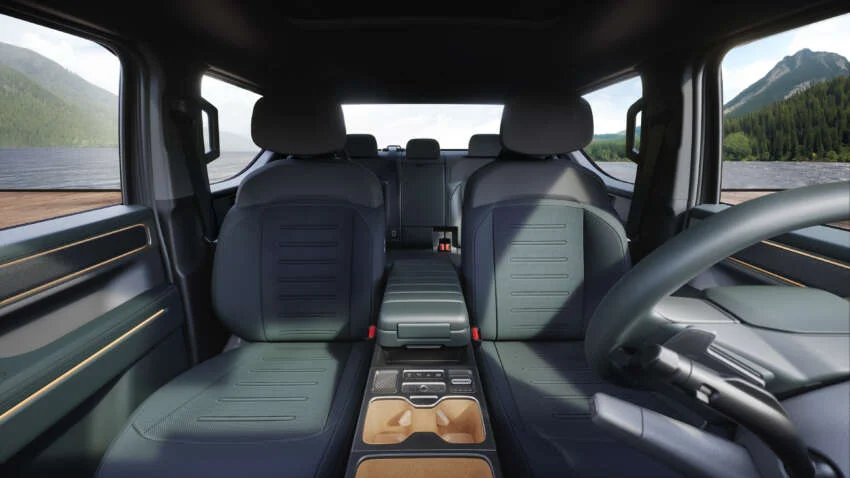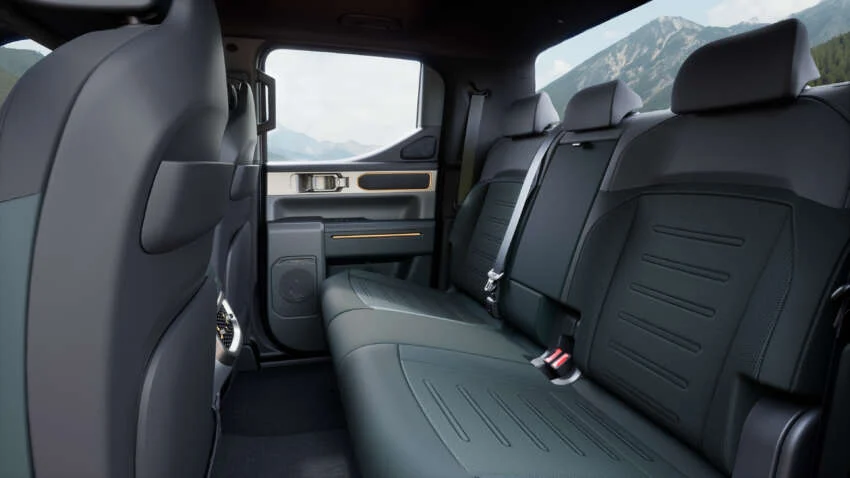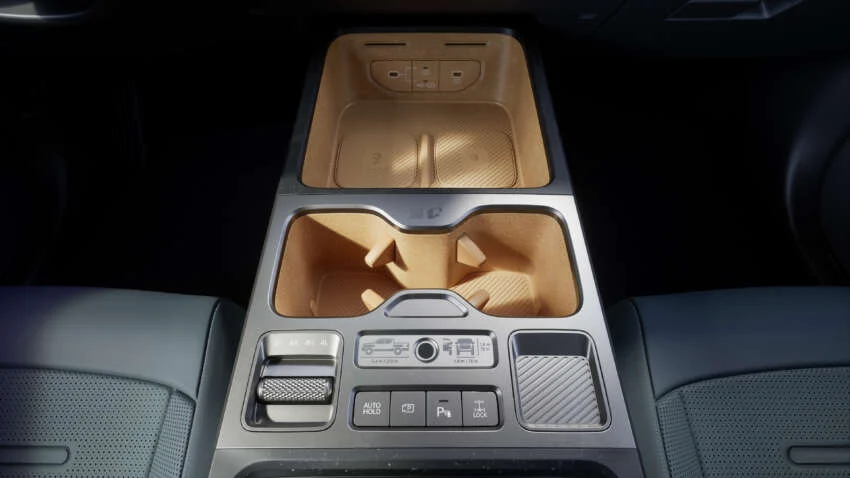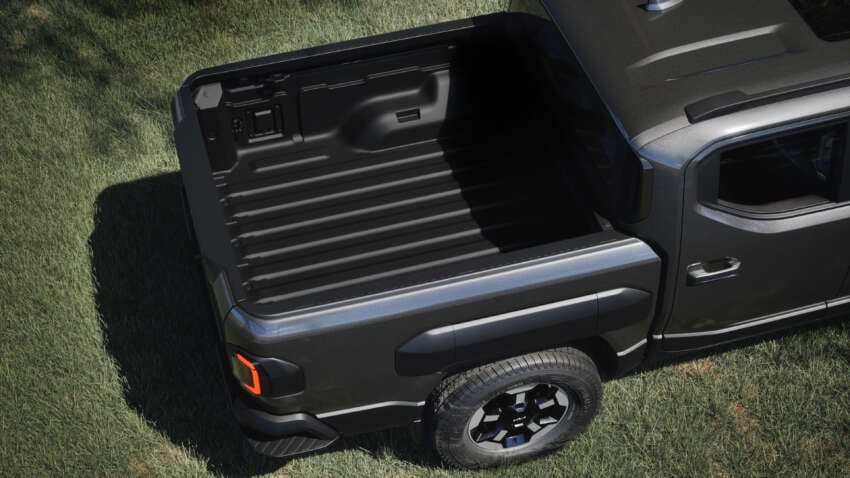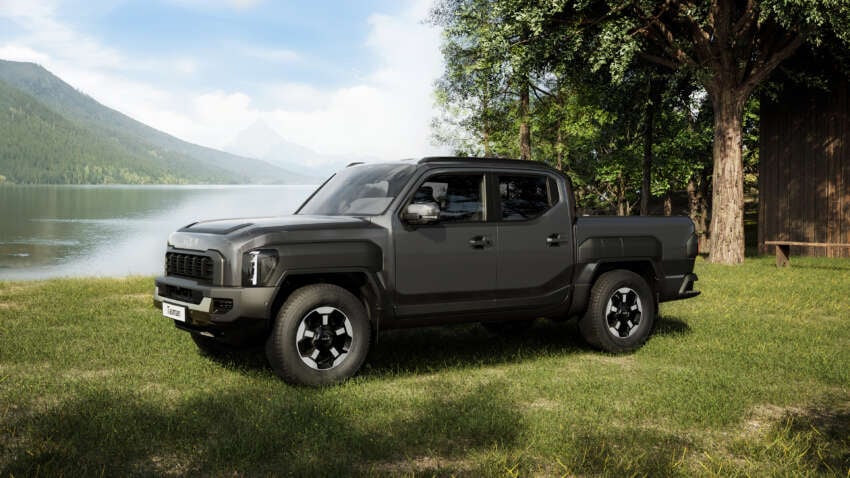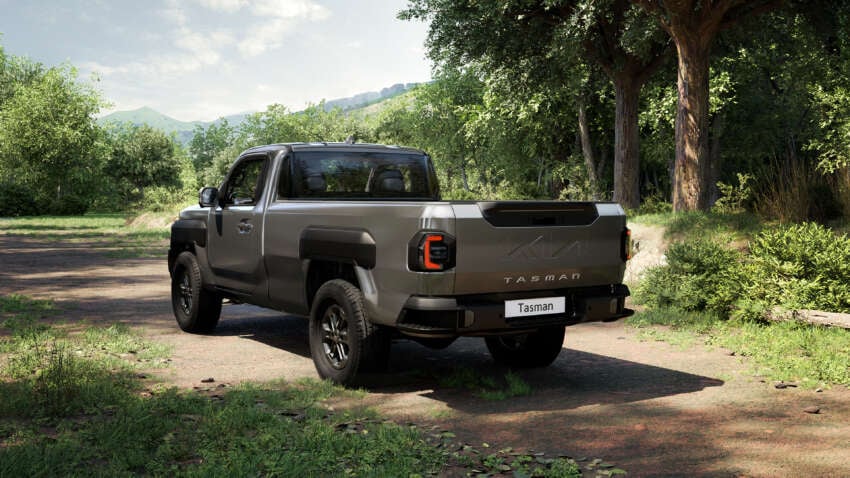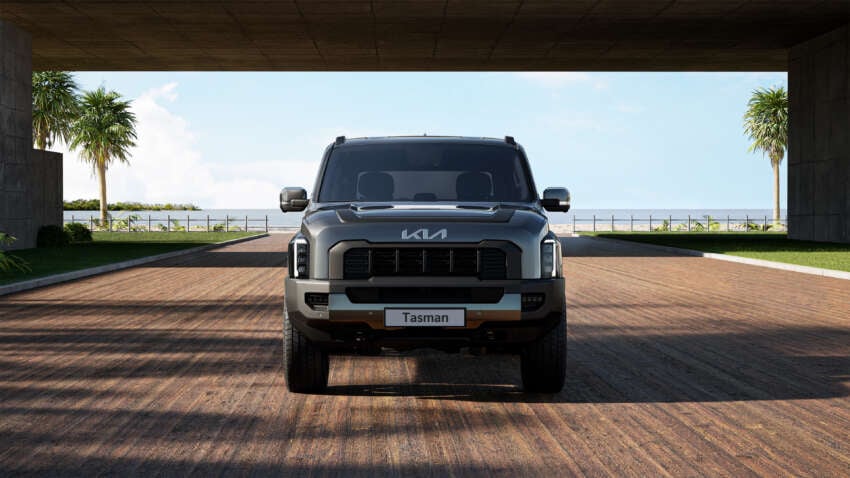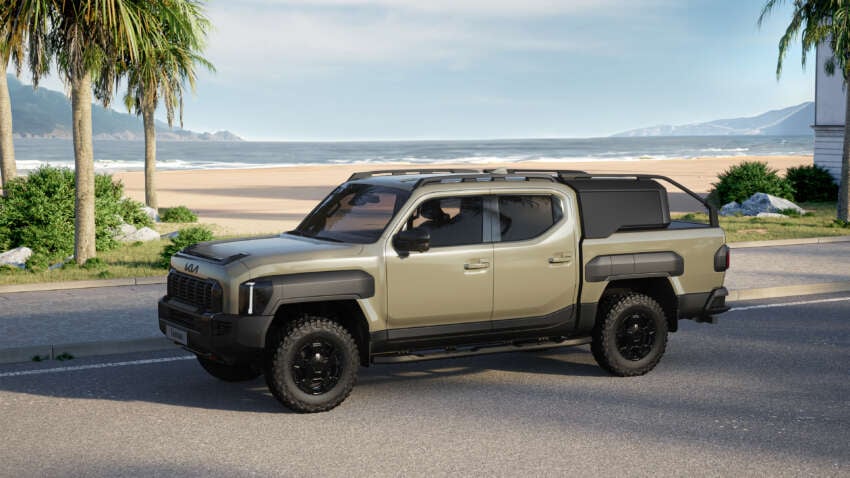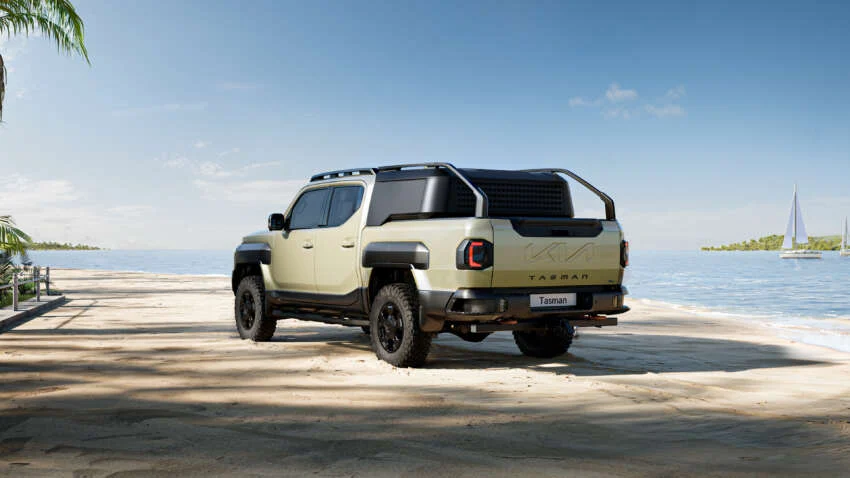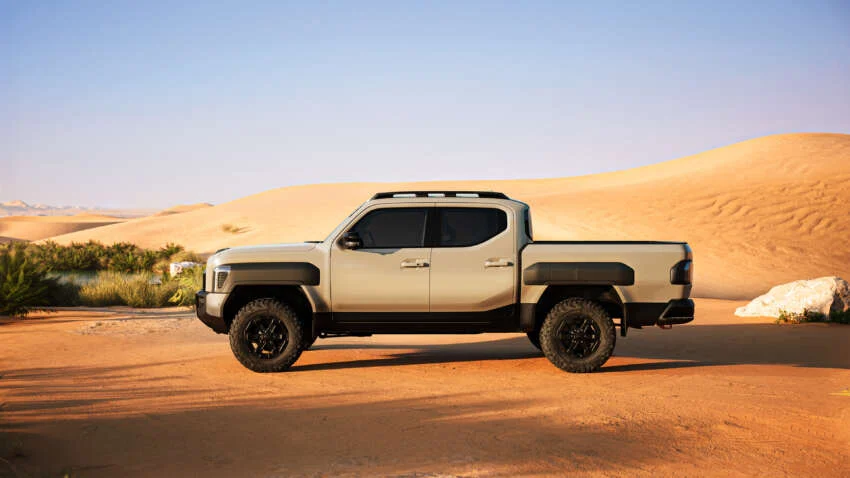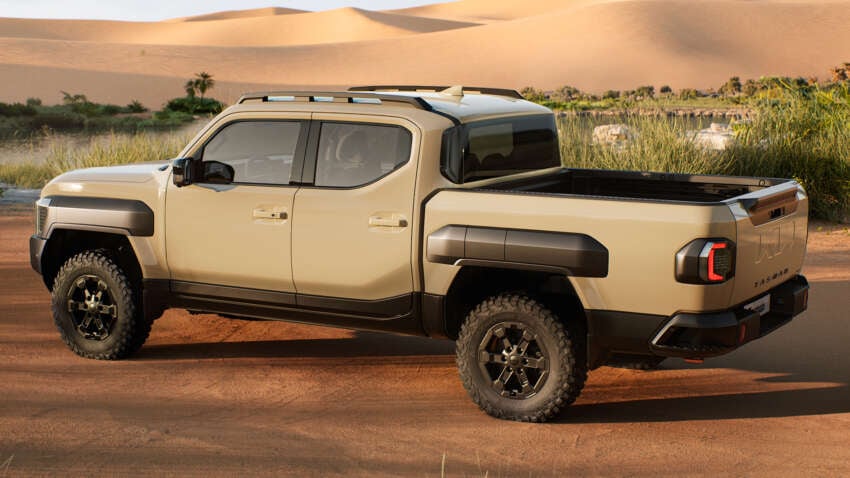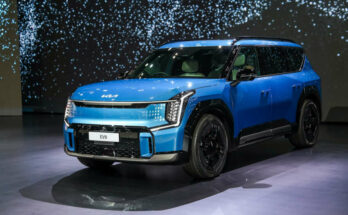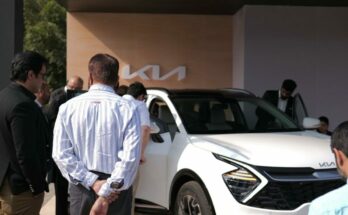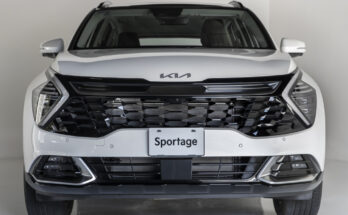Kia has officially unveiled its first pick-up truck, the Tasman, following its initial teaser in April. Unlike the SUV-based Hyundai Santa Cruz, the Tasman is a rugged, one-tonne truck designed to compete with the Toyota Hilux. It features a ladder-frame chassis, solid rear axle with leaf springs, and double-wishbone front suspension.
Available in single- and double-cab variants, plus a customizable chassis cab, the Tasman offers a payload capacity of over 1,000 kg, a towing capacity of 3,500 kg, and a water wading depth of 800 mm. Durability is enhanced with waterproof connectors and other water ingress prevention measures.
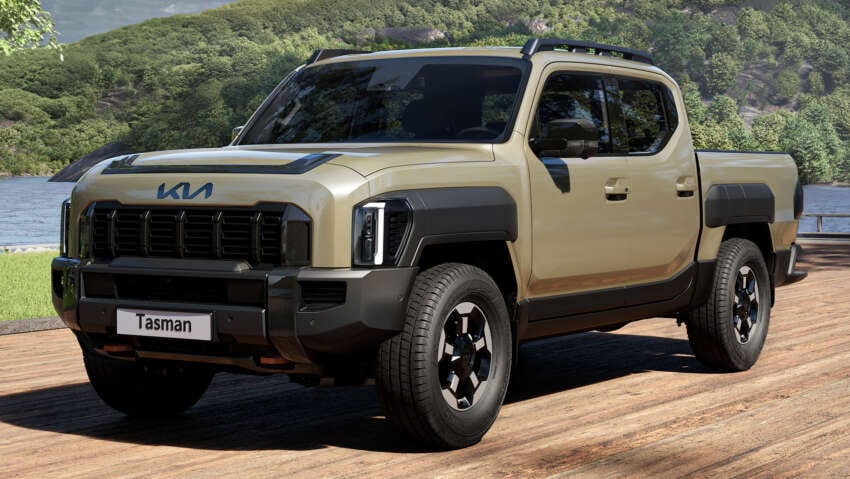
The Kia Tasman offers modern engine options, including turbocharged petrol and diesel variants, depending on the market. The petrol engine is a 2.5-liter Theta 3 direct-injected four-cylinder, delivering 281 PS and 421 Nm of torque, paired exclusively with an 8-speed automatic transmission. It accelerates from 0 to 100 km/h in 8.5 seconds and has a top speed of 185 km/h, but its fuel consumption is relatively high at 8.0 km per liter.
For a more work-oriented choice, the Tasman features an updated 2.2-liter R turbodiesel engine, producing 210 PS and 441 Nm of torque. This engine can be paired with either a 6-speed automatic or a 6-speed manual transmission. Although it takes 10.4 seconds to reach 100 km/h, it offers better fuel efficiency at 13.2 km per liter.
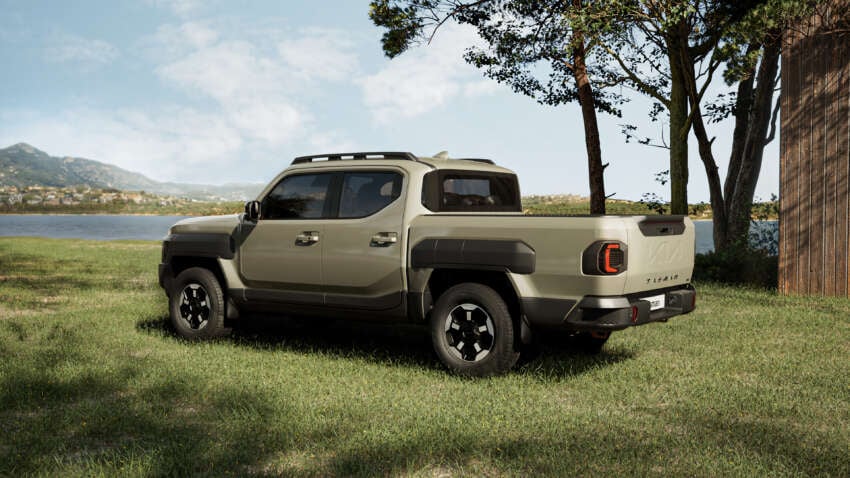
The Kia Tasman features advanced suspension technology, including frequency-selective dampers typically found in premium vehicles and Hydraulic Rebound Stop technology, designed to reduce vibration and enhance body control and comfort on rough terrain.
For buyers seeking enhanced off-road capabilities, the X-Line and X-Pro variants offer standard four-wheel drive (optional on the base model) that can automatically switch between two-wheel and four-wheel drive, as well as low-range 4WD. They come with three drive modes (Eco, Smart, Sport) and three terrain settings (Sand/Desert, Mud, Snow), with the X-Pro adding a Rock mode.
Unique to the X-Pro model are 17-inch wheels with all-terrain tires, a 28 mm lift kit for increased ground clearance of 252 mm, an electronic locking rear differential, and an X-Trek mode, which functions like an off-road cruise control similar to Land Rover’s All Terrain Progress Control. The X-Line features larger 18-inch highway terrain tires instead.
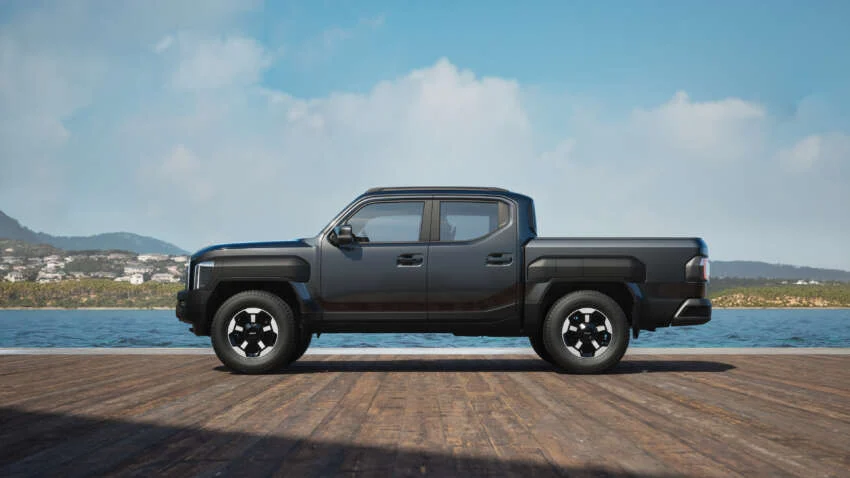
Kia has designed the Tasman to have a unique and eye-catching appearance that may polarize opinions. Its most distinctive feature is the black horizontal fender flares, which incorporate vertical headlights, a fuel filler door, and a small storage compartment on the right side of the bed.
The design includes a tubular-shaped body accentuated by a large grille and U-shaped black trim on the bonnet, contributing to Kia’s Tiger Face graphic alongside a robust front bumper. The overall look is characterized by sharp lines, an upright windscreen, an upswept window line kink on double cab models, compact C-shaped taillights, and integrated bed steps in the rear bumper.
Double-cab models come with a cargo bed measuring 1,512 mm in length, 1,572 mm in width (1,186 mm between the wheel wells), and 540 mm in depth, boasting a segment-leading cargo capacity of 1,173 liters. Additional features include built-in lighting, a sliding cargo floor for easier loading and unloading, and a 240- or 220-volt power outlet.
Kia offers four customization options for the Tasman to enhance usability: Single Decker (with a canopy and roof rack), Double Decker (featuring butterfly bed doors and a sliding tonneau cover), Sports Roll Bar, and Ladder Rack packages. Additionally, there are 13 accessories available, including two side steps and rugged bead-lock wheels.
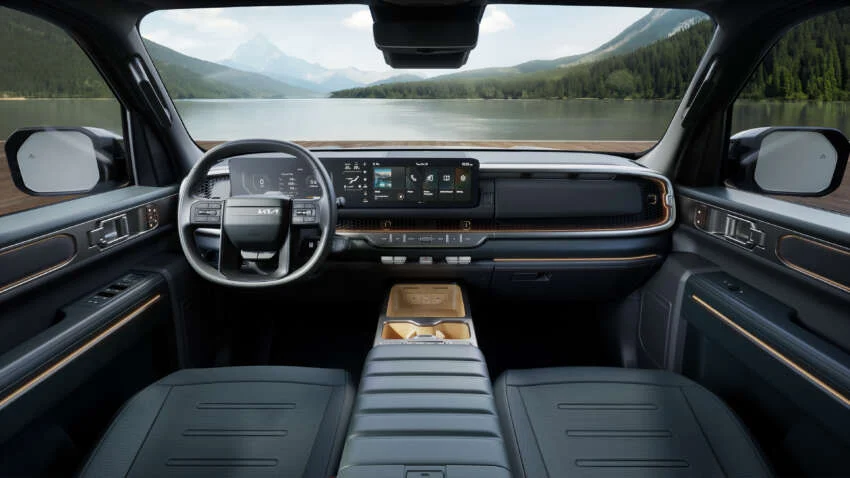
Inside, the Tasman features a familiar pick-up layout with an oblong dashboard, a spacious center console that includes various storage options and dual Qi wireless chargers, along with robust toggle switches. A honeycomb mesh design over the air vents is reminiscent of the latest Honda models, like the Civic.
The tech setup includes dual 12.3-inch displays for instrumentation and infotainment, separated by a five-inch multifunction screen for climate controls, similar to the EV9. Standard features include Apple CarPlay and Android Auto, while an optional eight-speaker Harman Kardon sound system is also available.
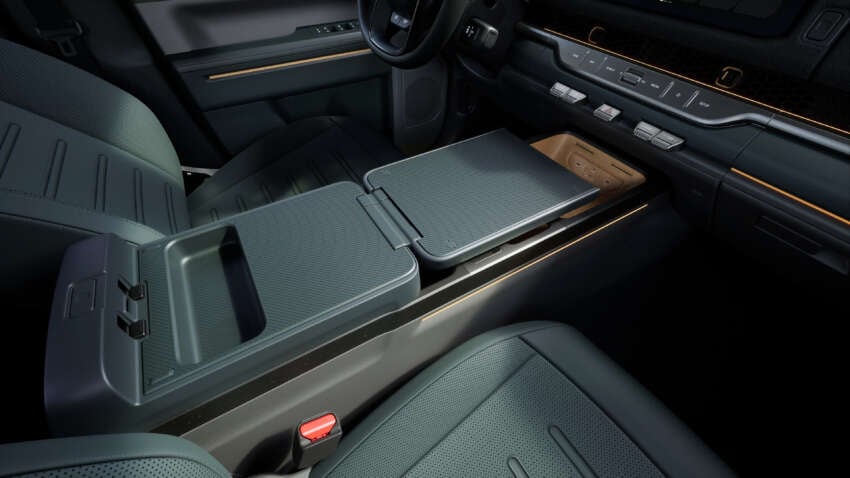
The Kia Tasman features several practical elements, such as a large folding console table, hidden storage bins under the rear seats with a total capacity of 33 liters, and a recline function for the rear seats that allows passengers to lean back between 22 and 30 degrees. It also boasts best-in-class headroom, shoulder room, and 940 mm of rear-seat legroom.
In terms of technology, the Tasman includes a range of advanced driver assistance systems, such as Highway Driving Assist 2 (HDA 2), which offers Level 2 semi-autonomous driving capabilities, optimized for towing a trailer.
The Kia Tasman is set to launch in its home market of South Korea in the first half of 2025, with a gradual rollout planned for Australia, Africa, and the Middle East, particularly Saudi Arabia, where it was unveiled and is expected to perform well.

Responsible for delivering local & international automotive news.

